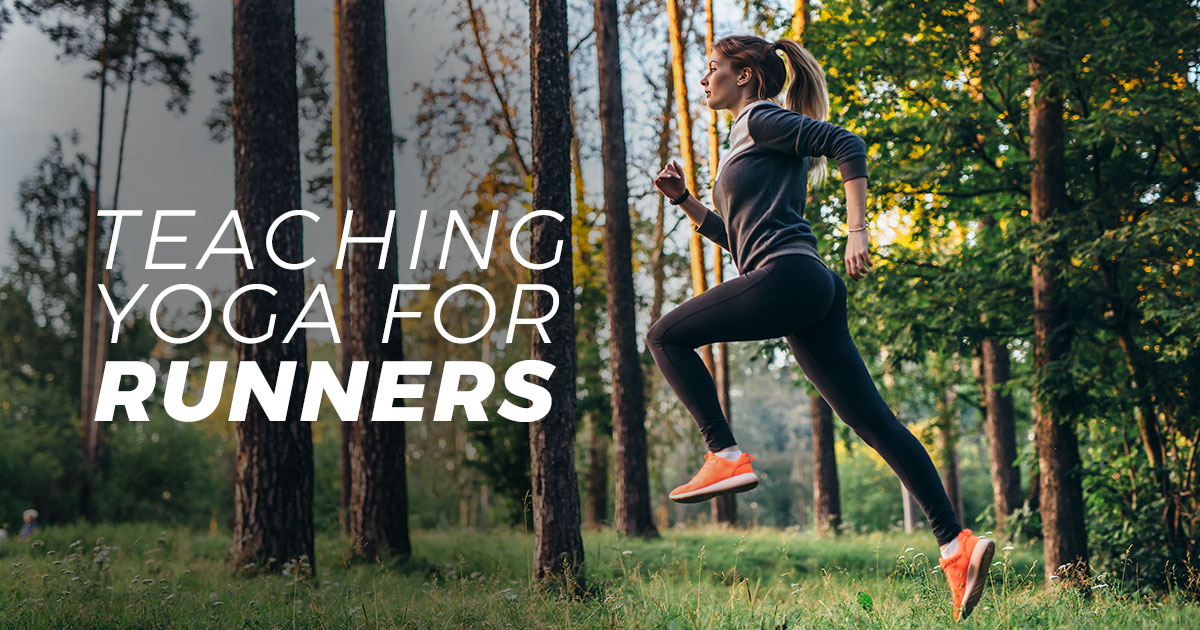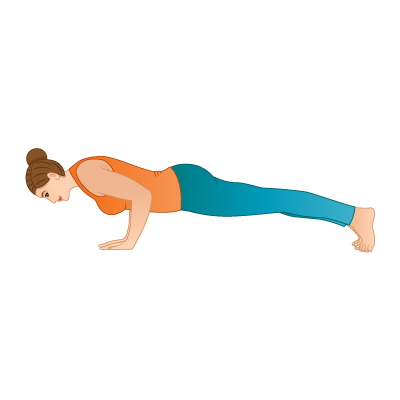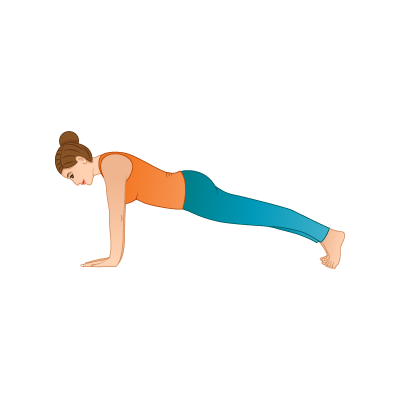Teaching Yoga for Runners
June 1, 2018 | 5 min read
Running is an enjoyable sport and one of the most proven methods for weight loss. Although beneficial in many ways, running can give you a bad back, tight hamstrings, sore feet and knee injuries. To get better at running and stay injury free, it’s important to offset it with a regular Yoga practice.
Why Yoga and Running
There are many added benefits of combining Yoga with a running routine. The muscle wear and tear experienced after a long run can be counterbalanced with stretching which is an integral part of Yoga. This in turn also helps build balance and strength in the body, making it possible for runners to enjoy their runs while being free of pain and injury.
As teachers, we understand that a consistent yoga practice makes us more aware of our body. This is especially useful for runners, as sometimes endorphins released during a run can mask signals of pain sent by the body. The mind-body awareness cultivated during Yoga thus helps runners be more intuitive to these signals sent by their body.
Most importantly, Yoga poses are great for relieving tight hips and hamstrings, while the building upper body strength and maintain good running form.
Yoga for Runners classes + workshops
Yoga for runners is a niche yoga group and it can be easy to start teaching these classes in your vicinity. One of the best times to take advantage and organise Yoga for runner’s classes is during Marathon season. Keep your eyes open for your city’s Marathon or running calendar and organise a set of classes as a build up towards race day. Another option you can explore is the idea of a ‘Yoga for runners’ workshops. They can be planned along with Marathon sponsors and help spread the word amongst participants.
Getting in touch with local run clubs and teaching a few classes every week can also convince the runners about the recovery power of Yoga.
Yoga for Runners Class Planning Tips
Warm up: Since runners are used to the warm up and cool down involved in runs, it’s nice to take a leaf of inspiration from this sequence into your class plans. Start off your Yoga for runners class with a good warm up. Sun salutations being the most obvious option, try and mix up the classic sun salutations by increasing and decreasing the tempo of each round.
Hamstrings & Hips: The most essential areas to focus on while planning a yoga for runners class are the hips and hamstrings. Poses like Knee to Chest Pose, followed by Reclining Big Toe Pose can be held for a longer time as they work on relaxing tight hamstrings. Other reclining poses like Eye of the Needle and Happy Baby Pose are extremely effective in opening the hips and releasing any stored tension. Other hip opening poses you can include into your yoga class plans are One-Legged Pigeon Pose, Prayer Squat Pose and Butterfly Pose.
Lunges are a runner’s best friend: One group of poses which are great to strengthen the legs are lunges. Warrior pose I, II and III are a great combination to add to any class plan. Also, combining them with High Lunge, Low and Reverse Lunge Pose can add more variety and challenge the runners to work on their strength.
Yoga postures for Upper Body Strength: Runners have good lower body strength as the most commonly used muscle groups while running are the quads, calves, hip flexors, hamstrings and glutes. As a Yoga teacher, it is important to include poses that work the core and upper body strength. This allows for a good balance in the body and also improve the range of motion.
Breathwork: Most Yoga for runners classes skip pranayama altogether, as it’s assumed that the poses are sufficient to work on recovery. There are several benefits to including a small window of time in your yoga class for breathing exercises such as alternate nostril breathing and full yogic breathing. Leading runners through these exercises will allow them to understand the rhythm of breath, which can relieve cramping that occurs frequently during long distance runs.
Use of props: Keep your props handy while leading a yoga for runners group as tightness is a common issue amongst runners. Yoga straps specifically come in handy, as the runner’s inflexibility can hinder them from practising certain poses such as Reclining Big Toe Pose, One-Legged Pigeon Pose and Extended Hand to Big Toe Pose.
Blocks are also useful while leading them through Standing Forward Bends and Reverse Lunge Pose.
Active Vinyasa or Cooling Down Yin?
Most Yoga teachers planning classes for athletes and runners are often confused about teaching a Vinyasa or Yin style class. One way of solving this puzzle is to understand that running is an endurance sport and all runners get their active miles through running. So a cooling Yin would be the best to balance the Yin in running.
Adithi Mathews is a 500 Hr CYT,yoga practitioner and writer living in Germany.
Posted in Methodology, Teaching Resources, Teaching Tips
Tags: yogaforathletes




